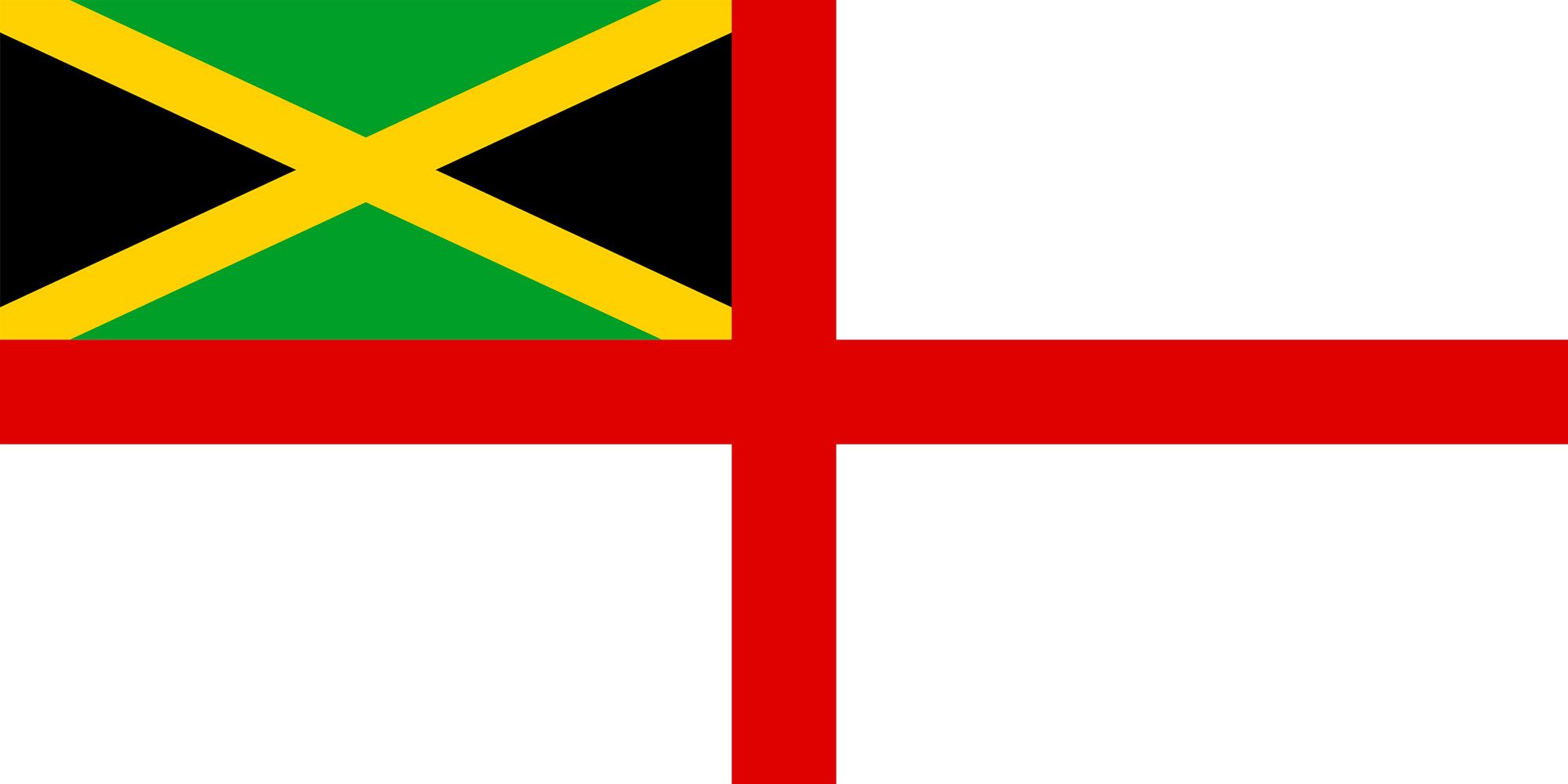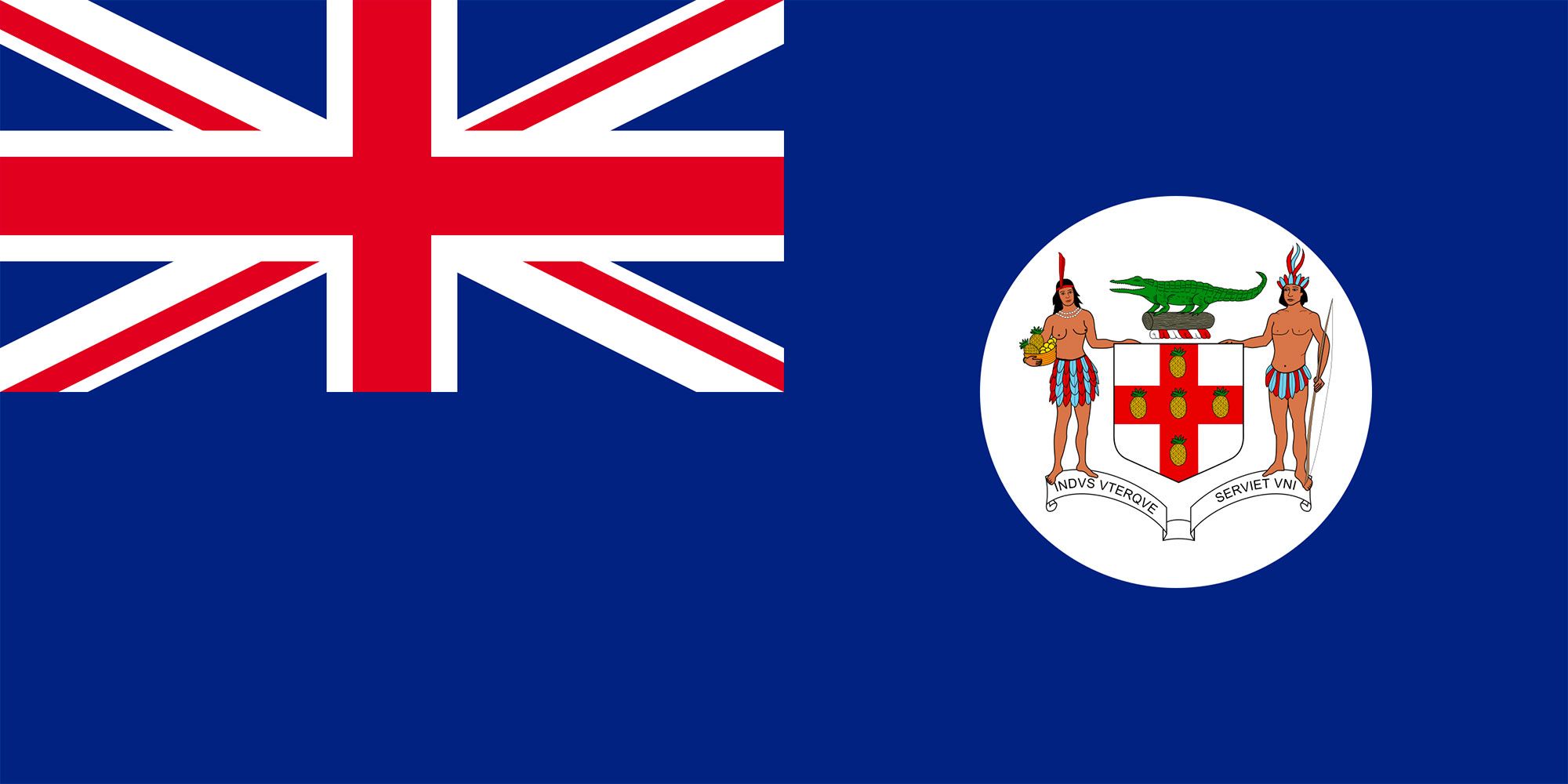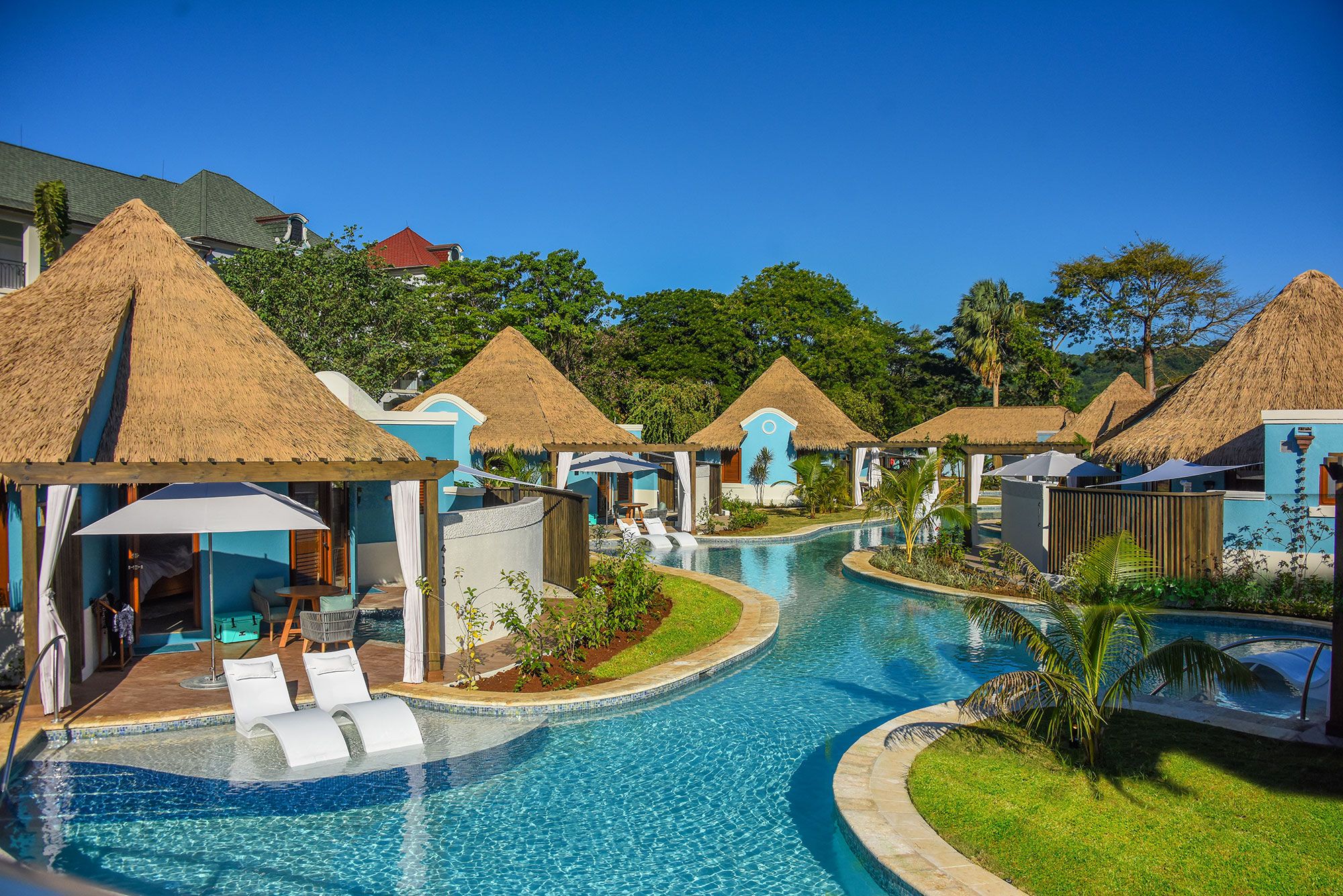Flag Of Jamaica Explained: History & Symbolism
[ad_1]
Photo credit: railway fx/Shutterstock.com
There’s so much about Jamaica to fall in love with! Not only is it the third-largest island of the Caribbean (after Cuba and Hispaniola), it is also one of the most vibrant and historic. The country is known for many things, such as its gorgeous greenery, picture-perfect beaches, and luxury all-inclusive resorts. Plus, Jamaica’s flag is probably one of the most recognizable in the world.
Jamaica’s flag has a stand-out, tri-color flag featuring striking shades of green, black, and gold. The flag, which was adopted in 1962, is sometimes referred to as “The Cross” because of its gold saltire which looks like a diagonal cross. If you’ve ever wondered about this national symbol, read on. We’ll share details on the symbolism and history of the national flag of Jamaica.
Good to know: So, where is Jamaica? The island is located in the Caribbean Sea, just about 90 miles south of Cuba and 119 miles west of Hispaniola. That’s just 560 miles from Miami, Florida!
The history of the Jamaican national flag
Jamaica became an independent nation on August 6, 1962, and adopted its official flag on the same date. Having gained independence from the United Kingdom, the country was in a state of celebration.
It took time to come up with just the right flag for this beautiful and vibrant island nation. A nationwide competition was hosted in an attempt to foster community involvement. Ultimately, the Jamaican flag was designed by a bipartisan committee of the Jamaica House of Representatives. A very similar process was followed in 1973 to design the national flag of The Bahamas.
Jamaica’s original flag design featured horizontal stripes instead of the saltire, but it was considered too similar to the flag of Tanganyika, part of present-day Tanzania. So, the stripes were replaced by the saltire in the final design.
Expert tip: Want to find out more about Jamaica’s history and culture? Check out some of these amazing things to do in Jamaica, especially visiting the Bob Marley Museum!
Symbolism of the Jamaican flag

Photo credit: Elzloy/Shutterstock.com
One of the amazing things about international flags is the individual meanings and representations. Flags can often tell you about national values and aspects held dear to a particular place.
The Jamaican flag’s meaning can be interpreted concisely and poetically as: “The sun shineth, the land is green, and the people are strong and creative.” In other words, the colors of the Jamaican flag stand for the sun (gold), the land (green), and the people (black). To provide more detail: the gold cross/saltire represents the sun and the national wealth of the country; the green top and bottom triangles represent the lush, mountainous landscape and agricultural resources of this tropical island; the black left and right triangles represent the strength and creativity of the Jamaican people.
Fun fact: Jamaica’s flag is unique because it is one of only two national flags in the world that features no red, white, or blue. The other is the national flag of Mauritania.
Etiquette surrounding the Jamaican national flag
There are a few guidelines when it comes to showcasing the Jamaican national flag:
- At no point should the displayed flag touch the ground or floor.
- The Jamaican flag should not be draped on vehicles of any kind, with the exception of military, police, or state events.
- No flag should be flown above or to the right of the flag of Jamaica while in the country, except for at foreign embassies and consulates.
- It is mandatory that the Jamaican flag not be smaller than any other international flag being flown at the same time (exception for foreign embassies and consulates).
- Flags that are faded or irreparably damaged should be burned privately; they should not be used for any other purpose than that which was intended.
- When the flag is being used on civilian grounds, the flagpole should be raised at 8 am, and brought down at sunset.
Other flags of Jamaica
State flags

The Jamaican state ensign is a design used by members of the island’s government. It is a blue ensign with the Jamaican flag in the top hoist (canton).
There’s a separate ensign which is used by the coast guard of this island; this version is white and has a red St. George’s cross. It also features a Jamaican flag in the canton.
Historical flags

Historically, Jamaica used different flags during its pre and post-independence periods. Before the island’s independence from the United Kingdom, the country’s flag had a blue background with the flag of the United Kingdom in the top hoist, and the Jamaican coat of arms to its right. This design had four variations: the main difference was the island’s coat of arms, which began to evolve after the year 1906.
The coat of arms of Jamaica is a reflection of the island’s national motto, ‘Out of Many One People’. The motto speaks to the multicultural nature of Jamaica, and this heritage is depicted in the island’s coat of arms. The current coat of arms of Jamaica showcases a male and female from the Taino tribe standing on opposite sides of a shield. The shield features a red cross and five golden pineapples. A crocodile is mounted atop the crest, just above the Royal Helmet of the British Monarchy and mantling.
The design holds great significance because the Tainos were the first inhabitants of the island of Jamaica. The pineapples and crocodiles are indigenous to Jamaica, examples of the country’s diverse flora and fauna. The Royal Helmet and mantling represent a special distinction given to Jamaica by the British and acknowledge the country’s former status as a British colony.
Learn all of Jamaica’s secrets first-hand!

Picture: Create your own secret hideaway at Sandals South Coast in Whitehouse, Jamaica. The South Seas Swim-Up Rondoval Butler Suite with Private Pool Sanctuary offers the perfect combination of extravagance and seclusion.
Jamaica’s flag is definitely one of the most unique and eye-catching flags in the world. There are many more features of Jamaica that are just as extraordinary! From gorgeous waterfalls and natural springs to vast green mountains teeming with life, Jamaica is truly a tropical paradise. This island offers a variety of sights and activities that thrill-seekers, history buffs, and nature-lovers can all appreciate. Now that you’ve satisfied your curiosity about the Jamaican flag, you should try to discover some of the island’s other amazing secrets.
If you’re ready to start planning a vacation to the beautiful island of Jamaica, consider staying at one of the beautiful Sandals all-inclusive resorts in Jamaica. At Sandals, you’ll eat mouthwatering meals and snacks, drink delectable alcoholic and non-alcoholic beverages, and dance the night away at themed events, all included, all the time. When you’re not dining at one of the resort’s gourmet restaurants, or being pampered at the Red Lane Spa, you’ll be conveniently positioned to experience the dozens of other wonderful things there are to do in Jamaica. Plus, you’ll be well-prepared to take part in any pool-side conversations about the Jamaican flag when you arrive!
Expert tip: Depending on what you plan to do in Jamaica, you’ll find some seasons are better to visit than others. Find out here when is the best time to visit Jamaica!
[ad_2]
Source link


